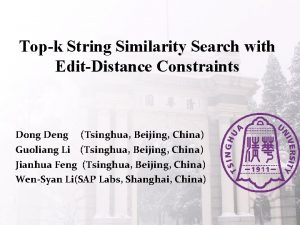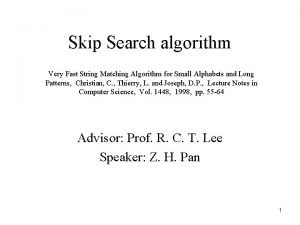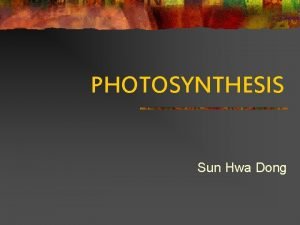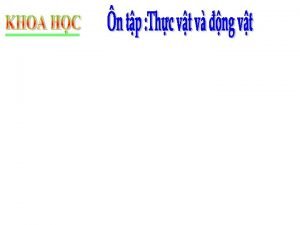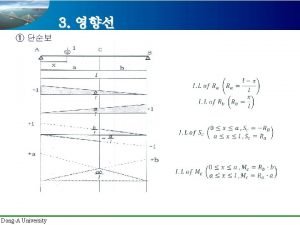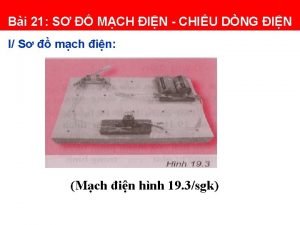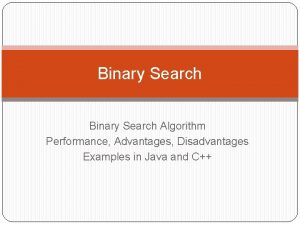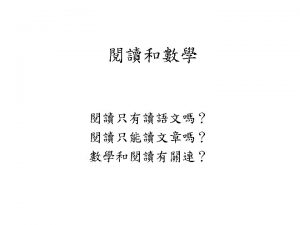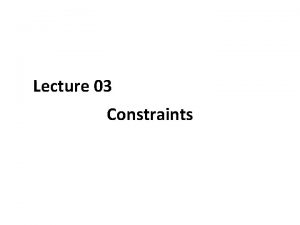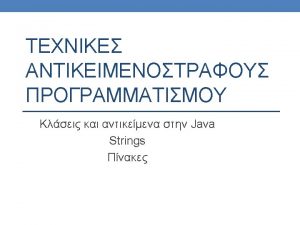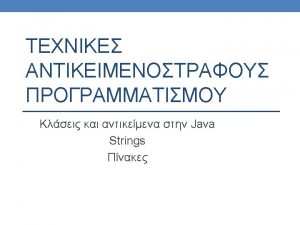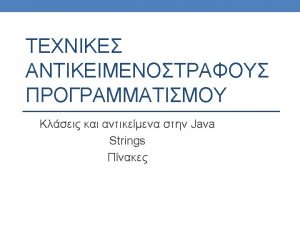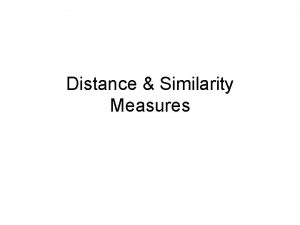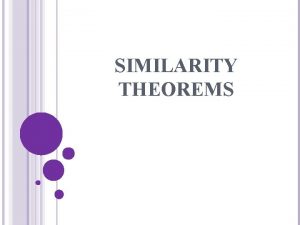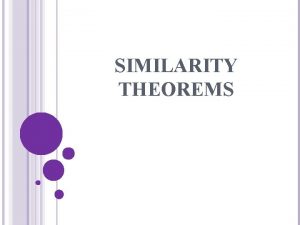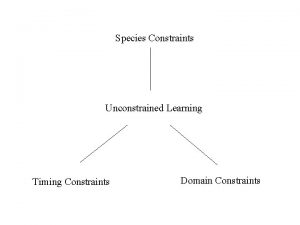Topk String Similarity Search with EditDistance Constraints Dong








































![Range based Method �Definition 4 (Pivotal Quadruple): A quadruple �[l, u], d, j�is a Range based Method �Definition 4 (Pivotal Quadruple): A quadruple �[l, u], d, j�is a](https://slidetodoc.com/presentation_image/d3d4909b6b2439f28d5e49a86d97d171/image-41.jpg)


![Range based Method �Extend Node ([6, 6] 1 1) index: 0 1 2 3 Range based Method �Extend Node ([6, 6] 1 1) index: 0 1 2 3](https://slidetodoc.com/presentation_image/d3d4909b6b2439f28d5e49a86d97d171/image-44.jpg)










- Slides: 54

Top-k String Similarity Search with Edit-Distance Constraints Dong Deng (Tsinghua, Beijing, China) Guoliang Li (Tsinghua, Beijing, China) Jianhua Feng (Tsinghua, Beijing, China) Wen-Syan Li(SAP Labs, Shanghai, China)

Outline �Motivation �Problem Formulation �Progressive Framework �Pivotal Entry-based Method �Range-based Method �Experiment �Conclusion 10/3/2020 Topk. Search @ ICDE 2013 2/42

Real-world Data is Rather Dirty! DBLP Complete Search �Typo in “author” Argyrios Zymnis Argyris Zymnis �Typo in “title” 10/3/2020 relaxed Topk. Search @ ICDE 2013 related 3/42

Web Search Actual queries gathered by Google 10/3/2020 m Errors in queries m Errors in data m Bring query and meaningful results closer together Topk. Search @ ICDE 2013 4/42

Example: a movie database Iron man The man Find movies starred Samuel Jackson Star Keanu Reeves Samuel Jackson Schwarzenegger Samuel Jackson Title The Matrix Iron man The Terminator The man Year 1999 2008 1984 2006 Genre Sci-Fi Crime 5

Query: Schwarzenegger? The user doesn’t know the exact spelling! Star Keanu Reeves Title The Matrix Year 1999 Genre Sci-Fi Samuel Jackson Iron man 2008 Sci-Fi Schwarzenegger The Terminator 1984 Sci-Fi Samuel Jackson The man 2006 Crime 6

Relaxing Conditions Find movies with a star “similar to” Schwarrzenger. Star Keanu Reeves Samuel Jackson Schwarzenegger Samuel Jackson Title The Matrix Iron man The Terminator The man Year 1999 2008 1984 2006 Genre Sci-Fi Crime 7

String Similarity Search �String Similarity Search finds all entries from the dictionary that approximately match the query. �Applications: �Biology, Bioinformatics �Information Retrieve �Data Quality, Data Cleaning �…. 10/3/2020 Topk. Search @ ICDE 2013 8/42

Outline �Motivation �Problem Formulation �Progressive Framework �Pivotal Entry-based Method �Range-based Method �Experiment �Conclusion 10/3/2020 Topk. Search @ ICDE 2013 9/42

Problem Formulation �Top-k String Similarity Search: Given a string set S and a query string q, top-k string similarity search returns a string set R ⊆ S such that |R|=k and for any string r∈ R and s∈ S − R, ED(r, q) ≤ ED(s, q). the top-3 similar strings of srajit 10/3/2020 Topk. Search @ ICDE 2013 10/42

Edit Distance �ED(r, s): The minimum number of single-character edit operations(insertion/deletion/substitution) to transform r to s. �ED(srajit, seraji) = 2 10/3/2020 Topk. Search @ ICDE 2013 11/42

Dynamic Programming Insertion Deletion Match/Subsitition Di, j = min{Di-1, j + 1, Di, j-1 + 1, Di-1, j-1 + 0/1} 10/3/2020 Topk. Search @ ICDE 2013 12/42

Dynamic Programming �ED(srajit, seraji) = 2 Di, 0 = i, D 0, j = j, Insert e Di, j = min{Di-1, j + 1, Di, j-1 + 1, Di-1, j-1 + ti, j}, 0 if ai = bj where ti, j = 1 if ai bj. Delete t 10/3/2020 Topk. Search @ ICDE 2013 13/42

Outline �Motivation �Problem Formulation �Progressive Framework �Pivotal Entry-based Method �Range-based Method �Experiment �Conclusion 10/3/2020 Topk. Search @ ICDE 2013 14/42

Progressive Method Smallest Cell First. E 0 : (0, 0) (1, 1) 10/3/2020 Topk. Search @ ICDE 2013 15/42

Progressive Method Extending Cells E 0 : (0, 0) (1, 1) 10/3/2020 Topk. Search @ ICDE 2013 16/42

Progressive Method Extending Cells E 0 : (0, 0) (1, 1) E 1 : (1, 0) (0, 1)(2, 1) (1, 2) (2, 2) 10/3/2020 Topk. Search @ ICDE 2013 17/42

Progressive Method Find Match Cells. E 0 : (0, 0) (1, 1) E 1 : (1, 0) (0, 1)(2, 1) (1, 2) (2, 2) 10/3/2020 Topk. Search @ ICDE 2013 18/42

Progressive Method Find Match Cells. E 0 : (0, 0) (1, 1) E 1 : (1, 0) (0, 1)(2, 1) (1, 2) (2, 2) (3, 2) (4, 3) (5, 4) (6, 5) 10/3/2020 Topk. Search @ ICDE 2013 19/42

Progressive Method Extend Smallest Cells E 0 : (0, 0) (1, 1) E 1 : (1, 0) (0, 1)(2, 1) (1, 2) (2, 2) (3, 2) (4, 3) (5, 4) (6, 5) E 2: (2, 0) (3, 1) (4, 2) (5, 3) (6, 4) (1, 3)(2, 3) (3, 3) (4, 4) (5, 5) (6, 6) 10/3/2020 Topk. Search @ ICDE 2013 20/42

Progressive Framework �Index all strings using a trie structure Top 3 -Query: Q=srajit Entry (ni j) i-th node of trie; j-th character of Q Tx: node and char with ED=x 10/3/2020 Topk. Search @ ICDE 2013 21/42

Progressive Framework index: 0 1 2 3 4 5 6 �Find Match Nodes from (n 0 0) Top 3 -Query: εsrajit T 0: (n 0 0) (n 1 1) (ni j) i-th node of trie; j-th character of Q Tx: node and char with ED=x 10/3/2020 Topk. Search @ ICDE 2013 22/42

Progressive Framework �Extends Nodes (n 0, 0) index: 0 1 2 3 4 5 6 Top 3 -Query: ε s r a j i t T 0: (n 0 0) (n 1 1) (ni j) i-th node of trie; j-th character of Q Tx: node and char with ED=x 10/3/2020 Topk. Search @ ICDE 2013 23/42

Progressive Framework �Extends Nodes (n 0, 0) index: 0 1 2 3 4 5 6 Top 3 -Query: ε s r a j i t T 0: (n 0 0) (n 1 1) T 1: (n 0 1) (n 1 0) (n 21 1) (ni j) i-th node of trie; j-th character of Q Tx: node and char with ED=x 10/3/2020 Topk. Search @ ICDE 2013 24/42

Progressive Framework index: 0 1 2 3 4 5 6 �Return Results: n 20 n 5 n 10 Top 3 -Query: ε s r a j i t T 0: (n 0 0) (n 1 1) T 1: (n 0 1) (n 1 0) (n 21 1) (n 1 1) ……(n 20 6)…… T 2: …(n 5 6)… (n 10 6)… 10/3/2020 Topk. Search @ ICDE 2013 25/42

Outline �Motivation �Problem Formulation �Progressive Framework �Pivotal Entry-based Method �Range-based Method �Experiment �Conclusion 10/3/2020 Topk. Search @ ICDE 2013 26/42

Pivotal Entry-based Method �Definition 2 (Pivotal Entry): An entry � i, j�in Ex is called a pivotal entry, if D[i + 1][j + 1] > D[i][j]. We only need to keep the pivotal entry 10/3/2020 Topk. Search @ ICDE 2013 0 27/42

Pivotal Entry-based Method Smallest Pivotal Entry First. P 0 : (1, 1) 10/3/2020 Topk. Search @ ICDE 2013 28/42

Pivotal Entry-based Method Extending Cells P 0 : (1, 1) 10/3/2020 Topk. Search @ ICDE 2013 29/42

Pivotal Entry-based Method Extending Cells P 0 : (1, 1) P 1 : (2, 1) (1, 2) (2, 2) 10/3/2020 Topk. Search @ ICDE 2013 30/42

Pivotal Entry-based Method Find Match Entries. P 0 : (1, 1) P 1 : (2, 1) (1, 2) (2, 2) 10/3/2020 Topk. Search @ ICDE 2013 31/42

Pivotal Entry-based Method Find Match Cells. P 0 : (1, 1) P 1 : (1, 2) (2, 2) (6, 5) 10/3/2020 Topk. Search @ ICDE 2013 32/42

Pivotal Entry-based Method Extend Smallest Cells. P 0 : (1, 1) P 1 : (1, 2) (2, 2) (6, 5) P 2: (1, 3) (2, 3) (6, 6) 10/3/2020 Topk. Search @ ICDE 2013 33/42

Pivotal Entry-based Method Definition 3 (Pivotal Triple): Given an entry � n, j� , one of n’s children nc, and a query q, triple � n, j, nc�is called a pivotal triple, if ED(nc, q[1, j + 1]) > ED(n, q[1, j]). (ni j nc) ni: i-th node of trie j : j-th character of Query nc: a child of ni Px: pivotal triples with ED(ni, Q[1 … j])=x 10/3/2020 Topk. Search @ ICDE 2013 34/42

Pivotal Entry-based Method �Index all strings using a trie structure Top 3 -Query: Q=srajit (ni j nc) ni: i-th node of trie j : j-th character of Query nc: a child of ni 10/3/2020 Topk. Search @ ICDE 2013 35/42

Pivotal Entry-based Method index: 0 1 2 3 4 5 6 �Find Match Nodes Top 3 -Query: εsrajit P 0: … (n 1 1 n 2) … (ni j nc) ni: i-th node of trie j : j-th character of Query nc: a child of ni 10/3/2020 Topk. Search @ ICDE 2013 36/42

Pivotal Entry-based Method �Extend Node (n 1 1 n 2) index: 0 1 2 3 4 5 6 Top 3 -Query: εsrajit P 0: … (n 1 1 n 2) … P 1: . . . Substitution: (n 2 2 n 3) Insertion: (n 2 1 n 3) (n 3 2 n 4) Deletion: (n 1 2 n 2) (n 2 3 n 3) … 10/3/2020 Topk. Search @ ICDE 2013 37/42

Pivotal Entry-based Method index: 0 1 2 3 4 5 6 �Return Results Top 3 -Query: εsrajit P 0: … (n 1 1 n 2) … P 1: … (n 20 6 φ) … P 2: . . (n 5 6 φ) (n 10 6 φ) … … 10/3/2020 Topk. Search @ ICDE 2013 38/42

Pivotal Entry-based Method �Too many tuples �Want to group the children together 10/3/2020 Topk. Search @ ICDE 2013 39/42

Outline �Motivation �Problem Formulation �Progressive Framework �Pivotal Entry-based Method �Range-based Method �Experiment �Conclusion 10/3/2020 Topk. Search @ ICDE 2013 40/42
![Range based Method Definition 4 Pivotal Quadruple A quadruple l u d jis a Range based Method �Definition 4 (Pivotal Quadruple): A quadruple �[l, u], d, j�is a](https://slidetodoc.com/presentation_image/d3d4909b6b2439f28d5e49a86d97d171/image-41.jpg)
Range based Method �Definition 4 (Pivotal Quadruple): A quadruple �[l, u], d, j�is a pivotal quadruple, if it satisfies (1) �l, u�is a sub-range of a d-th level node’s range; (2) for any string s with ID in [l, u], ED(s[1, d + 1], q[1, j + 1]) > ED(s[1, d], q[1, j]); (3) strings with ID l − 1 or u + 1 do not satisfy conditions (1) or (2). 10/3/2020 Topk. Search @ ICDE 2013 41/42

Range based Method �Index all strings using a trie structure Top 3 -Query: Q=srajit [l, u] a range ([l, u] d j) j : j-th character d: the d-th level Px: pivotal quadruples with ED=x 10/3/2020 Topk. Search @ ICDE 2013 42/42

Range based Method index: 0 1 2 3 4 5 6 �Find Match Nodes Top 3 -Query: εsrajit P 0: ([6, 6] 0 0) ([1, 5] 1 1) [l, u] a range ([l, u] d j) j : j-th character d: the d-th level Px: pivotal quadruples with ED=x 10/3/2020 Topk. Search @ ICDE 2013 43/42
![Range based Method Extend Node 6 6 1 1 index 0 1 2 3 Range based Method �Extend Node ([6, 6] 1 1) index: 0 1 2 3](https://slidetodoc.com/presentation_image/d3d4909b6b2439f28d5e49a86d97d171/image-44.jpg)
Range based Method �Extend Node ([6, 6] 1 1) index: 0 1 2 3 4 5 6 Top 3 -Query: εsrajit P 0: ([6, 6] 0 0) ([1, 5] 1 1) P 1: ……([6, 6] 1 1)…… P 2: … Substitution: ([6, 6] 2 2) Insertion: ([6, 6] 2 1) ([6, 6] 3 2) Deletion: ([6, 6] 1 2) … 10/3/2020 Topk. Search @ ICDE 2013 44/42

Range based Method �Return Results index: 0 1 2 3 4 5 6 Top 3 -Query: εsrajit P 0: ([6, 6] 0 0) ([1, 5] 1 1) P 1: ……([6, 6] 1 1)…… ……([5, 5] 7 6) …… P 2: ……([1, 1] 5 6)…… ……. ([2, 2] 6 6)…… 10/3/2020 Topk. Search @ ICDE 2013 45/42

Outline �Motivation �Problem Formulation �Progressive Framework �Pivotal Entry-based Method �Range-based Method �Experiment �Conclusion 10/3/2020 Topk. Search @ ICDE 2013 46/42

Experiment Setup �Three real Data sets �Existing algorithms Bed-Tree (downloaded from its hompage) � Adaptive Q-gram (we implemented) � Flamingo(downloaded and we extended it to suppert topk query) � 10/3/2020 Topk. Search @ ICDE 2013 47/42

Number of entries calculated RANGE was about 6 times lesser than PROGRESSIVE and PIVOTAL. This is because RANGE use pivotal quadruple group pivotal triples together and skip the unnecessary entries. 10/3/2020 Topk. Search @ ICDE 2013 48/42

Running time of the three methods The range-based method pruned many non-pivotal entries against the progressive-based method and grouped the pivotal entries to avoid unnecessary computations. 10/3/2020 Topk. Search @ ICDE 2013 49/42

Comparison with State-of-the-art Methods 10/3/2020 Topk. Search @ ICDE 2013 50/42

Scalability with Dataset Sizes for k=100, our method took 27 milliseconds for 1 million strings, 52 milliseconds for 3 million strings 79 milliseconds for 6 million strings. 10/3/2020 Topk. Search @ ICDE 2013 51/42

Outline �Motivation �Problem Formulation �Progressive Framework �Pivotal Entry-based Method �Range-based Method �Experiment �Conclusion 10/3/2020 Topk. Search @ ICDE 2013 52/42

Conclusion �Top-k String Similarity Search �A progressive framework to support top-k similarity search. �A pivotal entries method to avoid unnecessary computations. �A range-based method groups the pivotal entries. �Experimental results show that our method significantly outperforms existing methods 10/3/2020 Topk. Search @ ICDE 2013 53/42

THANKS! Q&A http: //dbgroup. cs. tsinghua. edu. cn/dd/projects/topksearch
 Merrily merrily christmas bells are ringing
Merrily merrily christmas bells are ringing Http protocol description
Http protocol description Class person string name
Class person string name Str-1
Str-1![Const int size=18; string *tbl2 = new string[size]; Const int size=18; string *tbl2 = new string[size];](data:image/svg+xml,%3Csvg%20xmlns=%22http://www.w3.org/2000/svg%22%20viewBox=%220%200%20200%20200%22%3E%3C/svg%3E) Const int size=18; string *tbl2 = new string[size];
Const int size=18; string *tbl2 = new string[size]; Elasticsearch similarity search
Elasticsearch similarity search Image similarity search
Image similarity search Image similarity search
Image similarity search Geometric similarity search
Geometric similarity search Geometric similarity search
Geometric similarity search Image similarity search
Image similarity search Fastest string search algorithm
Fastest string search algorithm Có mấy loại dòng biển
Có mấy loại dòng biển Yuxiao dong
Yuxiao dong Xiaolong dong
Xiaolong dong Hawmin
Hawmin Lis trong quản lý đơn hàng
Lis trong quản lý đơn hàng Dong nao jin maths
Dong nao jin maths Rang dong restaurant
Rang dong restaurant Lan nguyen thi
Lan nguyen thi Mishima yukio
Mishima yukio Hoa có cả nhị và nhụy
Hoa có cả nhị và nhụy The le family was sleeping when mailman
The le family was sleeping when mailman Dong liu ustc
Dong liu ustc Dong quai nedir
Dong quai nedir Dong sun-hwa
Dong sun-hwa Hoa dong riềng thụ phấn nhờ gì
Hoa dong riềng thụ phấn nhờ gì Lalawiganin halimbawa
Lalawiganin halimbawa Changyu dong
Changyu dong Ziqian dong
Ziqian dong Pooh pooh hypothesis
Pooh pooh hypothesis Iigcc
Iigcc Percival zhang
Percival zhang Jae dong noh
Jae dong noh Luna_xuany
Luna_xuany Dong pei li
Dong pei li Dong liu ustc
Dong liu ustc Overhanged
Overhanged Bài 33 dòng điện xoay chiều
Bài 33 dòng điện xoay chiều Peter dong
Peter dong Dong liu ustc
Dong liu ustc Ugvr
Ugvr Sơ đồ mạch điện chiều dòng điện
Sơ đồ mạch điện chiều dòng điện Best first search
Best first search Disadvantage of linear search
Disadvantage of linear search Federated search vs distributed search
Federated search vs distributed search Uninformed search methods
Uninformed search methods Comparison of uninformed search strategies
Comparison of uninformed search strategies Heuristik
Heuristik Search by image
Search by image Unified search vs federated search
Unified search vs federated search Informed and uninformed search in artificial intelligence
Informed and uninformed search in artificial intelligence Yahoo shopping tw
Yahoo shopping tw Gravity yahoo
Gravity yahoo Httptw
Httptw




![Const int size=18; string *tbl2 = new string[size]; Const int size=18; string *tbl2 = new string[size];](https://slidetodoc.com/wp-content/uploads/2020/11/1588947_40cf3415d0afabae1c436a49b39f4ad0-300x225.jpg)

